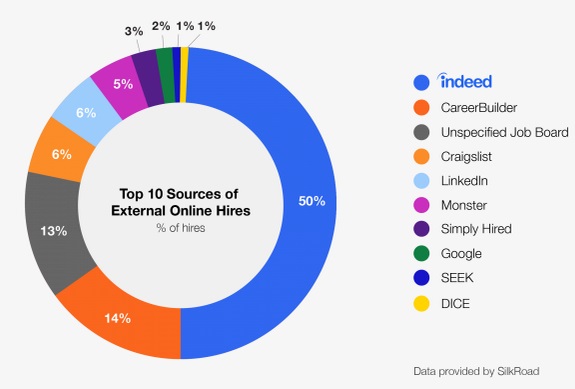Have you listened to an actual radio station lately?
I’m guessing you probably haven’t. You see radio, as a media consumption, is down to 12% of your total consumption, from 19% in 2009. One big change during that same period, is that a large number are switching to from 25% in 2009 to 55% today. Also, listening off various Apps on your smartphones, in your car, have increased to 35% today. In 2009, it was under 5%!
We are changing the way we consume music and talk programs. Radio used to be a solid medium to advertise jobs. Especially, those jobs in the service sector, skilled trades, etc. The advantage of job advertising on the radio was that the radio station had great data on their demographic of listeners. Age, location, gender, income, etc. This meant you could select fairly accurately who was listening to your job message.
Today, over 140 Million people are listening to Pandora and Spotify.
No longer when entering an office building do you hear the local ‘easy listening’ station, with about 20 minutes of commercials per hour. Now, you usually hear some version of internet radio, and usually that means Pandora or Spotify.
So, what does this mean for HR and Talent pros who still want to advertise their jobs on radio?
I think there is a huge opportunity, depending on your hiring demographic, to test using Apps like Pandora and Spotify to market your job openings.
Think about the advantages you could get using internet radio for job postings:
– They have similar demographics as traditional radio, plus you can get more targeted by location. Pandora and Spotify take user information to target local advertising, for unpaid subscribers. Let’s say you have a major competitor in Lincoln Park, IL. You want to advertise in just that market, and those users who self-identified to be in that market.
– The advertising model is based on impressions, so you can say I have a $100 per day budget, and only want it to run for 5 days. The ads will stop once he limit is hit. If it’s not hit, let’s say your advertising in a small market, the money comes back to you. So, this type of advertising is fairly inexpensive, as compared to traditional radio and other formats.
– The audience is going to skew millennial and younger. For those looking to hire in that demo, it’s not a guarantee, but the numbers don’t lie.
Truth be told I haven’t done this, but I would love to hear from someone who has tried this medium for job advertising. What I know is that there is a huge audience, and almost no employers are advertising in this space. That means one of two things: 1. It’s ripe for some great, cheap hiring; 2. It’s a total bust. I don’t think it’s a total bust. I think it’s just something people haven’t thought of, yet.
Let me know if you try it, and what your results are!

